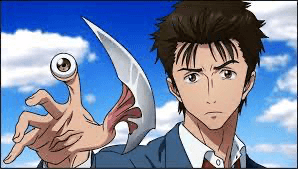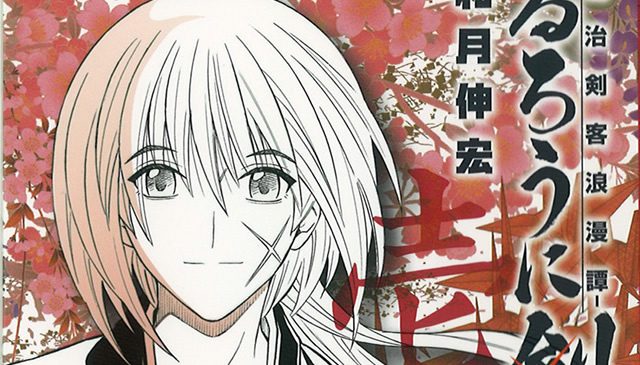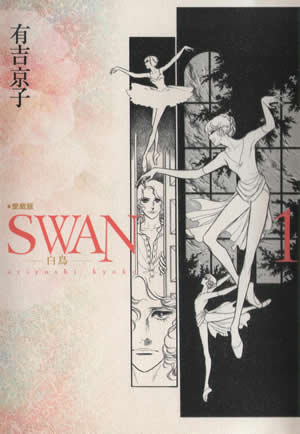-
[From March Issue 2015]
Gokusen
In this comedy YAMAGUCHI Kumiko is an unconventional teacher working at Shirokin Gakuin boy’s high school. The title “Gokusen” signifies that Kumiko is both the female heir to a crime syndicate and a school teacher. It was serialized from 2000 through to 2007 in the comic magazine “YOU.” It was adapted into a TV drama and movie, and through these works many actors became well-known.
A teacher at Shirokin Gakuin – a school with many problem children – Kumiko is put in charge of class four of the second year (junior year). The students proceed to make fun of seemingly mild-mannered Kumiko. One day when student KUMAI Teruo is attacked by senior year students, Kumiko comes to his rescue. Soon everybody comes to adore the hot-headed Kumiko. While helping out Kumiko, student leader SAWADA Shin finds out about Kumiko’s shady background.
Since her parents died in a traffic accident, Kumiko was left in the care of her grandfather KURODA Ryuichiro from a young age. The Kuroda clan, which her grandfather leads, has an excellent legal adviser called SHINOHARA Tomoya. Owing a debt of gratitude to Kumiko’s grandfather, Shinohara has remained in the underworld and during this time Kumiko has continued to hold a torch for him. Though she has the support of the clan’s henchmen, this romance does not develop.
As class four year two begins to come together as a group, Shirokin Gakuin’s future becomes uncertain. The school board chairman stops recruiting students for the next fiscal year and it’s rumored that the school is due to close. Angered by the news, Kumiko makes the board chairman write out a contract stating that if the school becomes number one in a sport or in a humanities subject within two months, the closure will be cancelled.
Though still having difficulty dealing with her students, with the help of the other teachers Kumiko begins to take charge. Kumiko and Sawada set up a boxing club, and challenge Japan’s most prestigious school to a match. Thinking that the team wouldn’t be able to win by playing fair, Kumiko uses underhand methods during the match. After securing a victory Shirokin Gakuin escapes closure.
During graduation Kumiko’s background come to light and she is forced to resign. Shinohara who has decided to return to Hokkaido because of his father’s illness asks the depressed Kumiko to marry him. But Kumiko elects to part with Shinohara when her students desperately plead with her to attend their graduation. Later, thanks to the efforts of the principal and her co-workers, she returns to Shirokin Gakuin.
The spirited protagonist is strong in a fight, but when it comes to love is completely clueless. So much so that she isn’t aware of her student Sawada’s affection for her until the last episode. After the series ended, special episodes were published several times. The growth of their mutual affection is depicted in these episodes.
Text: KAWARATANI Tokiko[2015年3月号掲載記事] ごくせん
ごくせん
男子高校、白金学院の型破りな教師、山口久美子が活躍するコメディ。「ごくせん」は、久美子が極道の跡取り娘で、また、先生であることを意味しています。まんが雑誌YOUで2000年から2007年まで連載されました。テレビドラマや映画も制作され、俳優の多くは、この作品をきっかけに人気が出ました。
問題児が集まる白金学院の教師になった久美子は2年4組の担任になります。生徒達は地味な印象の久美子をばかにします。あるとき、生徒の熊井輝夫が3年生に襲われますが、久美子に助け出されます。やがて熱血漢あふれる久美子を、皆は慕うようになります。リーダー格の沢田慎は久美子の手助けをするうちに、久美子の裏の稼業を知ってしまいます。
久美子は両親が交通事故で亡くなったため、幼い頃に祖父の黒田龍一郎に引き取られました。祖父が取りまとめる黒田一家には、篠原智也という優秀な顧問弁護士がいます。祖父への恩義のために裏世界にいる篠原に対して久美子は一途な恋心を持ち続けます。子分達も応援しますが、恋愛には発展しないままです。
2年4組が団結を見せるなか、白金学院が存続の危機を迎えます。理事長が来年度の生徒募集をやめ、閉校にすると言い出したのです。怒った久美子は、2ヵ月の間に学問、スポーツ芸術で日本一になれば撤回すると、理事長に証文を書かせます。
生徒達に手を焼きながらも、他の教師と共に指導を始めます。久美子は沢田とボクシング部を立ち上げ、日本一の名門校と試合を行います。まともな方法では勝てないと思った久美子は、試合で裏技を使います。無事に勝利をおさめた白金学院は、閉校を免れたのでした。
卒業の時期になって、久美子の裏の顔が皆に知られてしまい、退職に追い込まれます。父親が倒れたため北海道へ帰る決心をした篠原は、落ち込む久美子にプロポーズします。卒業を見届けてほしいと言う生徒達の必死の説得に、久美子は篠原との別れを選びます。その後、校長や同僚の働きかけのおかげで、白金学院へ戻ることになります。
男勝りの主人公は、けんかには強いのですが、恋愛には疎いキャラクターです。最終回でやっと教え子である沢田からの恋心に気づくほどです。連載終了後も、何度か番外編が掲載されました。そこでは相思相愛になる様子が描かれています。
文:瓦谷登貴子 -
[From February Issue 2015]
AKIRA
OTOMO Katsuhiro’s masterpiece is regarded as a work that revolutionized the medium of manga in Japan. It introduced a variety of techniques: detailed and realistic depictions; and the effect of a spherical impact in the ground when supernatural powers are used. It was serialized in the weekly publication Young Magazine from 1982 through to 1990. The 1988 animated feature film was a big hit just like the manga. Currently, a live action film adaptation is in progress in Hollywood.
In December, 1982, a new and unidentified type of bomb explodes in the Kanto area. Triggered by the collapse of Tokyo, World War III begins. Skipping forward 37 years to 2019, the new capital of “Neo Tokyo” stands in Tokyo Bay. While it appears to have regained its prosperity, an unstable situation continues with anti-government guerrillas opposing the police and the military.
With the Tokyo Olympics to be held the following year, redevelopment of the neglected old city is due to begin. While KANEDA Shotaro is driving down the highway towards the old city with his motorcycle gang, a strange boy with white hair and a wrinkled face suddenly appears on the road before him. SHIMA Tetsuo, who is a member of the gang, is severely injured when he swerves out of the way.
The boy disappears into thin air right in front of Kaneda. Tetsuo is not hospitalized, but is admitted to a military facility where a series of tests proves that he has dormant supernatural powers. Kaneda meets the boy again by chance and witnesses his mysterious powers. The guerrilla army is investigating supernatural research and abducts the boy from the military facility. Soon Kaneda and Tetsuo come close to discovering the secret behind the government’s supernatural power development project.
Before the breakout of World War III, a project to develop supernatural powers in humans got underway. Children with artificially developed abilities were called Numbers. However, the abilities of Akira – one of these Numbers – accidentally destroyed Tokyo. The real identity of the new kind of bomb was Akira. After this, the military continued to suppress Akira.
Desiring this incredible power, Tetsuo forcibly wakes Akira. The government and the military are at odds over the issue of Akira. Guerilla forces and new cults also get involved and a struggle ensues. In the midst of this chaos, Akira again unleashes his powers and Neo Tokyo is demolished. Tetsuo absorbs Akira’s powers and builds his Great Empire of Tokyo on the ruins of Neo Tokyo.
With Akira by his side, Tetsuo’s powers rapidly develop. To compensate, his body undergoes a strange mutation. Kaneda stands in the way of the suffering Tetsuo. Should Tetsuo – who has started to become a monster with his powers going out of control – be destroyed or saved? Does Akira, who sympathizes with Tetsuo, finally end up destroying the Earth? The curtain rises on the final battle. This work continues to exert an influence in all kinds of media.
Text: HATTA Emiko[2015年2月号掲載記事]AKIRA
日本のまんが表現を変えたと評される大友克洋の代表作。緻密でリアルな描写や、超能力を使う場面で地面が球状にへこむ演出など、それまでなかった手法を持ち込んでいます。1982年から1990年まで週刊ヤングマガジンで連載されました。1988年に制作された劇場版アニメは、まんがと同様に大ヒット。現在、ハリウッドで実写映画化が進行しています。
1982年12月、関東地方で正体不明の新型爆弾が爆発。東京の崩壊をきっかけに、第3次世界大戦が起こります。それから37年が経った2019年、東京湾上には新首都「ネオ東京」が建設されています。繁栄を取り戻したかのように見える一方で、反政府ゲリラが警察や軍隊と対立する不安定な状態が続いています。
翌年の東京オリンピック開催を控え、放置されていた旧市街でも再開発工事が開始されようとしていました。金田正太郎が、暴走族仲間と旧市街へ向かうハイウェイをバイクで走っていたところ、年老いた顔で白髪の奇妙な少年が突然路上に現れます。仲間の一員である島鉄雄は、彼をよけきれず重傷を負います。
金田の目の前で少年は消えてしまいます。鉄雄は病院ではなく軍の施設に収容され、検査の過程で超能力が目覚めたことが判明します。偶然に少年と再会した金田は、彼の持つ不思議な力を目撃します。少年は、超能力研究を探るゲリラが、軍の研究機関から連れ出した超能力者でした。やがて金田と鉄雄は、政府が行っていた超能力開発プロジェクトの秘密に近づいていきます。
第3次世界大戦が起こる前から、人体実験により超能力者を造り出すプロジェクトが進められていました。人工的に能力を開発された子どもたちは、ナンバーズと名付けられました。しかしナンバーズの一人だったアキラの能力が暴発し、東京を消滅させてしまいます。新型爆弾の正体はアキラだったのです。それ以来、軍はアキラを封印し続けていました。
強大な力を求める鉄雄はアキラを強引に目覚めさせます。アキラを巡って政府と軍は対立。ゲリラや新興宗教教団まで入り乱れ、争奪戦が繰り広げられます。混乱した状況の中でアキラが再び能力を解放、ネオ東京は崩壊します。アキラを手に入れた鉄雄は、廃墟となったネオ東京に大東京帝国を築き上げます。
アキラをそばに置くうちに、鉄雄の能力は急激に成長します。その代償として、肉体が異常に変化していきます。苦しむ鉄雄の前に、金田が立ちはだかります。能力が暴走し、体も怪物化し始めた鉄雄を倒すのか、救うのか。暴走する鉄雄に共鳴するアキラは、ついに地球を滅ぼしてしまうのか。最後の戦いが幕を開けます。影響を受けた作品が、メディアをまたいで今も生み出されています。
文:服田恵美子 -
Bygone Days Still Beautiful
- Hiragana Times
- Jun 23, 2015
[From January Issue 2015]
Honey and Clover
Set in an art school, this work depicts the exploits of a group of young people who are awkwardly falling in love while trying to puzzle out their own futures. The series started in 2000, and was completed in 2006 after twice switching to different magazines. The animated cartoon televised in 2005 was so popular that a sequel was made the following year, and movie and TV drama adaptations have also been produced.
Along with his friends, who are attending the same school, TAKEMOTO Yuta lives a carefree life in a rundown apartment. One day he meets a young woman called HANAMOTO Hagumi. Due to enter art school the following academic year, she is on her way to visit her relative, the lecturer HANAMOTO Shuji. Takemoto falls in love the moment he sees Hagumi. However, at the same time, MORITA Shinobu, his senior, is also attracted to Hagumi.
Bowled over by Hagumi, who works on her art as if possessed, Takemoto gradually falls in love. Hagumi is blessed with an innate artistic talent, while Morita’s talents extend even beyond the artistic sphere, so the two are naturally drawn to each other. Takemoto, who considers himself to be mediocre, has an inferiority complex, so his heart is shaken by conflicting feelings of admiration and frustration towards the two.
Takemoto gradually realizes that Hagumi is experiencing a lot of pressure and is feeling isolated. Because she’s been praised for her talents from a young age, her classmates keep their distance from her, so until she meets Takemoto, she has no friends. Rather than force his feelings onto her, Takemoto decides to watch over Hagumi. In order to regain what she was unable to acquire before, Hagumi makes wonderful memories with Takemoto and friends.
Their limited school days draw to a close. While those around him choose their future careers, Takemoto’s job search falters and he buckles under the stress. In the end he repeats the year, postponing his graduation. When he finally obtains a promise of employment, the company goes bankrupt, so a brooding Takemoto sets off on an aimless bicycle trip. After spending a long period traveling, Takemoto sorts out his feelings and returns to his friends. And, though knowing that he will be rejected, he confesses his feelings to Hagumi.
Having considered Takemoto to be a close friend, Hagumi is perplexed. Additionally, just before graduation, a tragic event befalls Hagumi. Both Takemoto and Morita reach out to support Hagumi, but the decision that Hagumi arrives at massively alters her relationship with them.
The suffering caused by being unable to let someone know you like them and the angst that comes from being unable to visualize one’s own future are experiences anyone can identify with. Both for those people who hold something dear to their heart and for those who never look back, there is meaning in time spent together. This is what this story teaches us.
Text: HATTA Emiko[2015年1月号掲載記事] ハチミツとクローバー
ハチミツとクローバー
美術大学を舞台に、不器用に恋をして、手探りで未来を切り開こうとする若者たちを描いた作品。2000年に連載を開始し、その後掲載誌を2度移して2006年に最終回を迎えました。2005年に放映されたアニメは翌年に続編が作られるほど人気が高く、映画やテレビドラマも制作されています。
竹本祐太は、同じ大学に通う仲間たちと、ぼろぼろのアパートで楽しく暮らしていました。ある日、花本はぐみという少女に出会います。彼女は今年から美大に入学する予定で、親戚である講師の花本修司を訪ねてきたところでした。竹本は一瞬ではぐみに恋をしてしまいます。ところが同時に、先輩の森田忍もまた、はぐみに心を魅かれていました。
恋心がゆっくりと育っていく一方、何かにとりつかれたように創作活動に取り組むはぐみに、竹本は圧倒されます。天性の芸術的才能に恵まれたはぐみと、美術にとどまらず多くの才能を発揮する森田は、互いを認め合い近づいていきます。自分の平凡さに劣等感を持つ竹本は、二人に対する憧れと焦りが混じった感情に心を揺さぶられます。
竹本は次第に、はぐみの感じている重圧や孤独に気づきます。若くして才能を評価されているはぐみは同級生に敬遠されることも多く、竹本と出会うまで友人がいませんでした。竹本は自分の気持ちを押し付けるよりも、はぐみを見守る方を選びます。今まで手に入れられなかったものを取り戻すように、はぐみと竹本たちは思い出を積み重ねていきます。
学生時代という限られた時間は終わりへと向かっていきます。周囲が進路を決めていく中、竹本は就職活動が上手くいかないストレスで倒れてしまいます。留年して卒業が1年延びた末に、やっと決まった就職先が倒産、思いつめた竹本は自転車であてのない旅に出ます。長い旅路を経て、気持ちに整理をつけた竹本は、仲間たちのもとへ戻ってきました。そして受け入れられないと知りながら、ついにはぐみに思いを告げます。
竹本を大事な友人だと思っていたはぐみは、戸惑うばかりでした。さらに卒業を前にして、悲劇的な出来事がはぐみを襲います。竹本も森田も、それぞれはぐみを支えようとしますが、はぐみが下した決断は、彼らとの関係を大きく変えるものでした。
好きな人に気持ちを伝えられずに苦しんだり、先の見えない自分の未来に悩んだり、誰もが経験したことのある感情です。胸の中に何か大切なものを持つ人にとっても、二度と振り返らない人にとっても、一緒に過ごした時間には意味がある。それをこの物語は教えてくれます。
文:服田恵美子 -
[From Decemberber Issue 2014]
Parasyte
This manga depicts a fight against mysterious creatures that have infiltrated human society. After being serialized in 1989 in special editions of Morning Open, it was then run in Monthly Afternoon from 1990 to 1995. Translations have been published in other countries, making Parasyte well regarded both within and outside Japan. An animated TV series went on air in October 2014 and the first live action film adaptation will be released in November.
The story begins with a voiceover narrated by an unknown person: “This thought popped into the head of someone on Earth: ‘If the human population shrank to half its size, how many forests would be left unscathed?’”
They came from the sky one night. Eggs rained down all over the world, hatched, and leech-shaped creatures entered human bodies through their noses and earholes. By latching onto the brain, they control the whole body, and acting on instinct, feed on other human bodies through their host. By utilizing their heightened learning abilities, they learn to speak and infiltrate human society.
IZUMI Shinichi is attacked by a parasyte, but, because it entered his body through his right hand, he manages to keep it from reaching his brain. It does, however, manage to take over Shinichi’s right arm. So Shinichi has no other choice but to live with the parasyte. That right hand calls itself Migi “because it’s a migite” (right hand in Japanese).
Meanwhile, murders carried out by parasytes begin to occur. Confronted by reports of cruel crimes involving devoured bodies, Shinichi wonders whether he should reveal the truth. But Migi won’t allow it, insisting that its safety and Shinichi’s must come first. The parasytes continue to catch and devour more and more humans until one day, Shinichi is stabbed in the heart when his own mother becomes host to a parasyte. Migi saves him, but his mother dies and this takes a huge toll on him both mentally and physically.
Eventually humans discover that the parasytes are behind these incidents and the battle between parasytes and humans begins. People sometimes suspect that Shinichi has been taken over by a parasyte, and, after encountering different kinds of parasytes and humans, he himself is unsure where his loyalties lie. Uncertain whether they are mankind’s enemies, he becomes reluctant to kill parasytes.
Is it a crime for the parasytes to prey on humans? If so, isn’t it also a crime for humans to kill and eat other creatures? Isn’t there any way for parasytes and humans to coexist? Asked these questions, time and again by parasytes and humans, Shinichi naturally ponders this dilemma himself. Shinichi witnesses the suffering of both humans and parasytes, until the true enemy finally appears; the conclusion Shinichi finally comes to is a massive shock. The Japanese title “Kiseiju,” which means parasitic beast, contains a message that crosses generations.
Text: HATTA Emiko[2014年12月号掲載記事]寄生獣
人間社会に紛れ込んだ謎の生物との戦いを描いた作品。モーニングオープン増刊にて1989年に連載された後、月刊アフタヌーンにて1990~1995年まで連載されました。国内外ともに評価が高く、外国でも翻訳本が出版されています。2014年10月からテレビアニメが放映され、11月には実写映画の第1弾が公開されます。
物語は、誰が言ったともわからないナレーションから始まります。「地球上の誰かがふと思った。『人間の数が半分になったら いくつの森が焼かれずにすむだろうか……』」。
ある夜、彼らは空から訪れました。世界中に降り注いだ卵から生まれた生物は、ヒルのような形状で鼻や耳の穴から侵入します。そして脳に寄生して全身を支配し、その人物を通じて人間を食糧とする性質を持っています。そして、高い学習能力を活かして言語を習得し、社会に紛れ込んでいきます。
泉新一はパラサイトに襲われますが、右手からもぐり込まれたため、頭部に至る前に食い止めることができました。ところがパラサイトは新一の右手に寄生してしまいます。新一はパラサイトと共に生活せざるを得なくなります。右手は「右手だから」という理由からミギーと名乗ります。
一方、寄生したパラサイトによる殺人事件が起こり始めます。体を食い荒らす残酷な犯行が報道され、新一は事態の真相を明らかにするべきではないかと悩みます。ミギーは自分と新一の安全が優先だと主張し、それを許しません。パラサイトによる捕食は広がり続けます。新一の母親も寄生され、新一は心臓を貫かれます。ミギーに助けられますが、母親は死に、心身に大きな傷を負いました。
やがて人間側が事件の背後にいるパラサイトの存在に気づき、人間対パラサイトの戦いになっていきます。時に人間からパラサイトと疑われながら、新たな人々やパラサイトとの出会いを経験し、新一の心は揺れ動きます。パラサイトを人間の敵として殺すことをためらうようになるのです。
パラサイトが人間を捕食するのは罪なのか。もしそうならば他の生物を殺して食う人間も同罪ではないのか。彼らが共生する道はないのか。新一は、パラサイトからも人間からも繰り返しそう問われ、自らにも問いかけます。両者のはざまで苦しむ新一の前に、最終的に現れる敵の姿と、新一が導いた結論は、大きな衝撃を与えます。タイトルの「寄生獣」が意味する言葉と共に、時代を超えたメッセージを投げかけています。
文:服田恵美子 -
[From Novemberber Issue 2014]

© 矢沢漫画制作所/集英社
NANA, Cover of issue 1.
Written by YAZAWA Ai. Published by Shueisha Inc.
NANA
Brought up in a normal family, KOMATSU Nana’s (nicknamed Hachi) sole aim in life is to fall in love. OSAKI Nana, however, has led a lonely existence since she was abandoned by her mother when she was young. This is the story of the friendship that develops between two girls named Nana who strive to live their lives to the fullest despite getting wounded in love.
Hachi first encounters Nana on the shinkansen (bullet train) to Tokyo; Hachi is going to stay with her boyfriend, while Nana is hoping to make it big as a vocalist in a punk band. Since they are both 20 years old and have the same name, they hit it off and decide to share a flat together. Nana starts a band, but Hachi gets deeply hurt by the betrayal of her boyfriend. With Nana’s support Hachi recovers, and the bond between the two deepens.
The two main characters influence one other. Nana used to go out with Ren – who was in the same band and is now the star of a popular band. After they split up, they lost touch. Hachi who has been dependent on love and is spoiled by those around her, begins to stand on her own two feet after meeting Nana. Nana meets Ren again with the help of Hachi. They reaffirm their continuing affection for one another.
Supported by Hachi, Nana channels her passion into her band’s live performances. As the lovers get back together, collaboration between the two bands begins. For Hachi, who was originally a fan of Ren’s band, it feels like a dream.
Nana is narrated with the present day drama being carried out alongside flash-forwards into the future and flashbacks of the past. Nana portrays its protagonists as real life women with weaknesses and a selfish side. In the story, just when each of them finds happiness, ironically a crisis is visited on their friendship. The people around them get caught up in this, leading to an unexpected development.
Serialization of this manga began in 2000 in the magazine Cookie; subsequently 21 volumes were published. In 2005 the live-action adaptation was a big hit with more than three million people going to see the movie. Since translated versions were released in the United States, Germany, France, and other countries, it has gained ardent fans in many countries. Its broad appeal seems to be in its universal themes of strong friendship and disappointment in love that surpass differences of language and culture.
Serialization was halted by the sudden illness of the author in 2009, so the story has not yet concluded. This May, a short comic based on the original story was published. This has raised hopes among fans that this will provide the impetus for the story to be resumed.
Text: KAWARATANI Tokiko[2014年11月号掲載記事]

© 矢沢漫画制作所/集英社
NANA1巻表紙。矢沢あい著
集英社発行
NANA
平凡な家庭に育ち、恋愛だけが人生の目的である小松奈々(愛称:ハチ)と、幼い頃に母親に捨てられた孤独な境遇の大崎ナナ。対照的なNANAが友情を育み、恋愛に傷つきながらも懸命に生きていく物語です。
彼氏のもとに向かうハチと、パンクバンドのボーカルとして成功を夢見るナナは、東京行きの新幹線で出会います。二人とも20歳で同じ名前であることから意気投合し、ルームメイトとして一緒に暮らすことになります。ナナがバンド活動を開始する一方、ハチは彼氏の裏切りで深く傷つきます。ナナの支えで立ち直り、二人の絆は深まっていきます。
二人の主人公は、影響を与え合います。ナナは、かつて同じバンドメンバーで、今は人気バンドのスターとなっているレンと恋人同士でした。別れてからは、音信不通になっています。恋愛に依存して周囲に甘えて生きてきたハチは、ナナとの出会いから自立を模索します。ナナはハチの手助けでレンと再会します。そして、お互いの恋心が続いていたことを再確認します。
ハチの応援を受けて、ナナはバンドのライブ活動に情熱を注ぎます。そしてレンと恋人の関係に戻ったことから、ハチを交えた二つのバンドの交流が始まります。元々レンが所属するバンドのファンだったハチにとって、それは夢のようなひとときでした。
NANAは、未来から過去を振り返るナレーションが入り、現在のドラマが進行します。ヒロインのどちらもが、弱さやエゴイスティックな面を持つ等身大の女性として描かれているのが特徴です。物語では、それぞれが幸せをつかみかけたときに、皮肉にも友情に危機が訪れます。そして、周囲を巻き込んで思わぬ展開へと走り出します。
2000年に雑誌Cookieで連載が始まり、その後コミックスは21巻まで発行されています。2005年には実写映画化され、観客動員数は300万人を超える大ヒットになりました。アメリカ、ドイツ、フランスなどで翻訳発売され、各国でも熱烈なファンがいます。深い友情や恋愛の悩みといった普遍的なテーマが、言葉や文化を超えて支持を広げているようです。
作者の急病で2009年に連載が休止し、物語は完結していません。今年5月には、本編とは別の短いまんがが掲載されました。再開のきっかけになればとファンの間では期待が高まっています。
文:瓦谷登貴子 -
[From October Issue 2014]
Chihayafuru
“Chihayafuru” is the story of a high school girl who becomes passionate about “competitive karuta.” This competition utilizes traditional Hyakunin Isshu playing cards. Selected in the Kamakura era by the court aristocrat FUJIWARA no Teika, a set of Hyakunin Isshu playing cards is a collection of the 100 best waka (Japanese poems) written between the Asuka era (sixth to eighth centuries) and the Kamakura era (twelfth to fourteenth centuries). The set is called Hyakunin (one hundred people) Isshu (one poem) because one poem was chosen from each poet.
There are two kinds of karuta sets: yomifuda (reading cards) and torifuda (playing cards). Torifuda only have the shimonoku (the second half of the poem) written on them. In competitive karuta, players compete for torifuda. If they can touch a playing card in their opponent’s territory, they can pass a playing card in from their territory to the opponent’s territory. Players compete to eliminate the playing cards in their home territory as fast as possible. It’s a taxing “sport” that requires quick thinking and reactions, since players need to immediately touch the torifuda when the first half of the poem – which is not written on the torifuda – is read out. It is generally played one-on-one but there are also individual and team competitions.
The story begins when Chihaya, the main character, is in sixth grade. She is proud of her beautiful older sister, for whom she has hopes of one day winning a Japanese beauty pageant. However, Arata, a new student at her school, tells her that this is not a true ambition as she isn’t aspiring for something herself. Arata’s own ambition is to become a top “meijin” (master) of competitive karuta.
In fact, having won the title of meijin seven times in a row, Arata’s grandfather was an “eisei meijin” (grand master in perpetuity).” Arata has also demonstrated that he’s an able player by winning the national championships each year for his age group from first grade to fifth grade. Inspired by Arata, Chihaya begins to nurse ambitions of becoming queen (top) in the women’s division. She gets her bosom buddy Taichi involved and the three begin to improve on entering the local competitive karuta club. However, after they graduate from elementary school the threesome is broken up when Arata returns to Fukui Prefecture and Taichi enters a private junior high school.
The story jumps forward four years. Chihaya and Taichi are reunited on entering the same high school. Though the two of them have distanced themselves from karuta during their junior high school years, they start up a karuta club at their high school. Chihaya’s interest in the meaning of these Japanese poems grows. In addition, by strategizing together as a unit, she begins to reflect on what it means to take a card as a team.
Meanwhile, Chihaya tries to persuade Arata, who had given up competitive karuta, to come back to the karuta world. Because Taichi has taken care of Chihaya since their elementary school days and because Arata becomes aware that Chihaya is a worthy rival, the relationship between the three develops a passionate side.
Since Hyakunin Isshu is often dealt with in classrooms, most Japanese are familiar with it, but competitive karuta was not so well known. Thanks to this comic, the popularity of competitive karuta has dramatically increased and the numbers of competitors has also increased.
Text: ICHIMURA Masayo[2014年10月号掲載記事]
ちはやふる
「ちはやふる」は「競技かるた」に熱中する女子高校生の物語です。競技かるたとは、百人一首を使った競技です。百人一首は飛鳥時代(6~8世紀)から鎌倉時代(12~14世紀)に詠まれた和歌の中から鎌倉時代の公家、藤原定家が優れた100首を選んだものです。ひとりの詠み手につき一首なので百人一首と呼ばれます。
かるたには読み札と取り札の2種類があります。取り札には下の句しか書かれていません。競技かるたでは取り札を取ります。敵陣の札を取ると自陣の札を一枚敵陣に渡します。自陣の札をいかに早くゼロにするかを競います。書かれていない上の句が読まれたらすぐに反射して取らなくてはならないので、頭脳と肉体の両方をハードに使う「スポーツ」です。1対1で対戦しますが個人戦と団体戦があります。
物語の始まりでは主人公の千早は小学6年生です。美人の姉が自慢で、夢は彼女がミスコンで日本一になることでした。しかし、転校生の新から自分のことでないと夢にしてはいけないと言われます。新の夢は競技かるたでトップの「名人」になることでした。
新の祖父は7回連続で名人になったことのある永世名人でした。新も小学1年から5年まで毎年学年別で全国優勝した実力の持ち主です。新に刺激され、千早も女性のトップであるクイーンになることを意識し始めます。幼なじみの太一も巻き込み、3人は地元の競技かるたの会に入り腕を上げていきます。ところが小学校卒業後、新は福井県に戻り太一も私立の中学校に進むことになり3人はバラバラになってしまいます。
物語はそれから4年後に。千早と太一は同じ高校に入学し再会を果たします。2人とも中学時代はかるたから距離を置いていましたが、高校ではかるた部を立ち上げます。千早は和歌の内容にも興味を持ち始めます。また団体戦での戦い方を通じて、みんなで札を取っていくことの意味を考えるようにもなります。
一方で千早は、競技かるたをやめてしまっていた新にまたかるたの世界に戻ってほしいと働きかけます。小学生の頃から千早を気にかけてきた太一、かるたの好敵手として千早の存在が大きくなっていく新。3人の関係は恋愛面でも発展しそうです。
百人一首は学校の授業で取り上げられることも多く、ほとんどの日本人が知っていますが、競技かるたはあまり知られていませんでした。この作品で競技かるたの知名度が一気に高まり、競技人口も増えました。
文:市村雅代
-
[From September Issue 2014]
Rurouni Kenshin (Wandering Swordsman Kenshin):
A Romantic Tale of a Meiji Swordsman
Set in the closing days of the Edo period (19th century), the main character is HIMURA Kenshin, a master swordsman widely feared as Hitokiri Battosai (Battosai the Killer Swordsman). The tale is set in a dramatic period when the governing Shogunate is overthrown by force and political machinations, bringing about a dramatic change from the Edo period to the Meiji period (the 19th to 20th centuries). This series was published in Weekly Shonen Jump between 1994 and 1999, and it was also adapted into a variety of media, including movies and novels. It’s popular both in Japan and overseas.
“Rurouni” is a coined word that means “aimless wanderer.” Having carried out assassinations as an anti-Shogunate swordsman, Kenshin is forced to quit because of an unfortunate incident. When the Meiji period arrives, he vows to never kill again, instead becoming a wanderer who travels around the country.
One day, Kenshin saved a girl named KAMIYA Kaoru in downtown Tokyo. Kaoru has inherited the dojo of Kamiya Kasshin School from her father, however, it is just about to fail financially. Kenshin and Kaoru develop feelings for each other. Now living in Kaoru’s home, he becomes good friends with MYOJIN Yahiko and SAGARA Sanosuke, spending his days peacefully in their company.
However, his past as a killer relentlessly comes back to haunt him. Because of an incident, Kenshin’s ability becomes known to the authorities, and he began to receive requests to escort military officials. Eventually he is challenged to a duel by UDO Jin-e, a man obsessed with perfecting his deadly swordsmanship. Though Kenshin wins this duel to the death, Jin-e tells him with his dying breath that Kenshin is a killer at heart.
After some heavy fighting, Kenshin discovers that his instinct as a killer swordsman is reawakening. While fearing that he might lose sight of himself, he resolves to do battle against SHISHIO Makoto, who is plotting to wage war against the Meiji government.
Just when it seems as if Kenshin has conquered his fear of losing control of himself and going on a killing rampage – that he has finally freed himself from the past – a man named YUKISHIRO Enishi appears. Enishi is the younger brother of Kenshin’s deceased wife, Tomoe. Enishi saw Kenshin kill his sister in the confusion of battle. Determined to take his revenge Enishi kidnaps Kaoru. Kenshin must once again come face to face with his greatest sin – of having lost his lover by his own hand.
Set at the historic turning point from the Edo period to the Meiji period, the tale introduces characters that really existed and events that really happened at that time, giving the drama a realistic appeal. The characters in the tale, while being thrust into the upheaval of the times, struggle to live life to the fullest according to their own principles.
Text: HATTA Emiko[2014年9月号掲載記事]るろうに剣心-明治剣客浪漫譚-
江戸時代末期(19世紀)に人斬り抜刀斎として恐れられた剣の達人、緋村剣心が主人公。幕府という政治体制が、武力行使と政治工作によって倒され、江戸から明治(19~20世紀)へと劇的に変化した時代を背景にしています。1994~1999年まで週刊少年ジャンプにて連載され、映画や小説などさまざまな方面でメディア化されました。国内外を問わず人気の高い作品です。
「るろうに」とは、流れ者を意味する造語です。討幕派の志士として暗殺を実行していた剣心は、ある不幸な事件をきっかけに影の任務を退きます。明治になってからは「不殺」の誓いを立て、流浪人として全国を旅します。
ある日、東京の下町で神谷薫という少女を助けます。薫は神谷活心流の道場を父から受け継いでいましたが、道場を奪われそうになっていました。二人はいつしか心を通い合わせるようになります。薫の家に居候することになった剣心は、明神弥彦や相楽左之助と親しくなり、穏やかな日々を過ごします。
しかし人斬りだった過去は容赦なく追いかけてきます。ある事件で剣心の実力を知った警察から、陸軍の役人を護衛する依頼が舞い込みます。そして人斬りへの強烈な欲望を持つ鵜堂刃衛に戦いを挑まれます。死闘の末に勝利しますが、刃衛は剣心の中にも人斬りの本性が巣食っていると言い残します。
厳しい戦いをいくつも経て、封じていた人斬りの本能が目覚めていきます。自らを見失う恐れを抱えたまま、明治政府に戦争を仕掛けようと企む志々雄真実との戦いを決意します。
人斬りとして暴走する恐怖を克服し、過去に区切りをつけたかに見えたとき、雪城縁が現れます。縁は剣心の妻だった巴の弟で、戦いの巻き添えで剣心に殺される姉を目撃していました。縁は復讐するために薫を誘拐します。ついに剣心は最大の罪――愛する人を自分のせいで失った過ち――と再び向き合います。
本作は江戸から明治という歴史の転換期を舞台に、実在する人物や事件を物語に盛り込むことでリアリティーが演出され、魅力を増しています。登場人物たちは、激動する時代に振り回されときに踏みにじられながらも、各々の立場で懸命に生きています。
文:服田恵美子 -
[From August Issue 2014]
NARUTO
“Naruto” is an ongoing comic strip serialized weekly in Shonen Jump since 1999. Through numerous battles, it portrays friendships and familial ties between ninjas. There are up to 69 volumes of the book version, and total circulation has exceeded one hundred thirty million copies. It is also very popular abroad.
The story begins with the hero, UZUMAKI Naruto training to become a ninja while studying at school in Konohagakure no Sato (Village Hidden in the Leaves) in the Land of Fire. Twelve-year-old Naruto does not have parents and the adults around him treat him coldly. This is related to an incident that occurred 12 years ago: the village of Konohagakure no Sato was badly damaged when it was attacked by Kyuubi, a demon fox with nine tails.
Naruto’s father was the fourth “hokage” to lead Konohagakure no Sato. To protect the village he sealed the nine-tailed fox into the body of newborn Naruto, afterwards losing his life. Because it is forbidden to speak of this, Naruto doesn’t know anything about it. However, because he carried the demon fox inside his body, the adults have kept Naruto at arm’s length.
Before the story was serialized, the setup was going to be that Naruto himself was the human manifestation of the Kyuubi. However, in a different book, author KISHIMOTO Masashi explained that he decided to change this setup in order that Naruto would be more appealing to readers. The story occasionally explores the fact that as a “human” whose body contains a Kyuubi, Naruto both feels cut off from others and craves acceptance.
The work is divided into two parts. Part One mainly depicts Naruto’s friendships in Konohagakure no Sato; those friends who will eventually team up with him. In Part Two, the world the story is set in expands. The conflict with ninjas from countries scheming to use the power trapped within Naruto heats up. Naruto finds himself in tricky situations again and again as he faces the various techniques of the ninjas. A large-scale war between ninjas breaks out and more and more people close to Naruto lose their lives.
Because they are ninjas, the characters live according to their own special code. The story fizzes with unusual vocabulary. However, the troubles and joys depicted are not any different from those experienced by readers. Meticulous attention to detail is taken over the circumstances and psychology of not just Naruto, but of all the characters. This is why there is no arch villain. While viewing the story from Naruto’s perspective, readers can also empathize with the ninjas attacking Naruto and his friends, and it’s this that gives the story its depth, making hearts race. This is perhaps the secret as to why the serial remains so popular after 15 years.
Text: ICHIMURA Masayo[2014年8月号掲載記事]
NARUTO – ナルト –
「NARUTO -ナルト-」は週刊少年ジャンプで1999年から連載中のまんがです。忍者の友情や家族との絆を数々の戦いを通じて描いています。単行本は69巻まで出ていて累計発行部数は1億3千万部です。海外でも大人気です。
物語は主人公うずまきナルトが火の国木の葉隠れの里で忍者を目指し、学校で勉強しているところから始まります。12歳のナルトに両親はいませんが、そんな彼に周囲の大人は冷たい態度を取っています。それは12年前の出来事に関係していました。木の葉隠れの里が九つの尾を持つ妖狐、九尾に襲われ大変な被害にあったのです。
ナルトの父親は、木の葉隠れの里を統率していた四代目火影でした。里を守るため、生まれたばかりのナルトの体内に九尾を封印し、その後命を落とします。このことは固く口止めされたため、ナルトには知らされていませんでした。しかし、大人たちは妖狐を体内に抱える者としてナルトを敬遠していたのでした。
連載が始まる前の設定では、ナルトはこの九尾自身が人間に変身したものということになっていました。しかし、それでは読者がナルトに共感できないだろうと設定を変更したと作者の岸本斉史は別冊で語っています。九尾を体内に持つ「人間」であることから生じるナルトの疎外感やみんなに認めてもらいたいと思う気持ちは、しばしば物語に反映されました。
作品は第一部と第二部に分かれています。第一部では主にナルトと同じチームを組むことになった木の葉隠れの里の仲間たちとの友情が描かれています。第二部になると物語の世界は大きく広がります。ナルトの体内に封じ込められた九尾の力を悪用しようとたくらむ他国の忍者たちとの戦いが本格化。様々な技を繰り出してきてナルトはしばしばピンチに陥ります。大規模な忍者間の戦争も起き、ナルトの親しい人が命を落とすシーンも増えます。
物語の中では耳慣れない言葉が飛び交い、登場人物たちは忍者ならではの独自のルールで生きています。しかしそれぞれの抱える悩みや喜びは読者と変わりません。ナルトだけでなく他の登場人物の事情や心理も細かく描写されているので絶対的な悪役は存在しません。読み手はナルトの立場にたって物語を読みながら、ナルトたちを襲う忍者にも感情移入し、ハラハラドキドキしながら物語に深く入り込んでいきます。連載開始から15年たっても衰えない人気の秘密はそんなところにあるのでしょう。
文:市村雅代
-
[From July Issue 2014]
SWAN
In recent years, it’s not all that unusual for Japanese people to win international ballet competitions or to join famous overseas ballet companies. But this was still a distant dream in 1976, when the serialization of “Swan” began in the women’s comic magazine “Weekly Margaret.”
Fifteen-year-old HIJIRI Masumi travels to Tokyo from Hokkaido to watch Alexei SERGEIEV and Maria PRISETSKAYA, famous ballet dancers from the former Soviet Union (now Russia), perform in Japan. Unexpectedly the road towards becoming a ballerina opens up, when, deeply moved by the performance, Masumi unintentionally ballet dances in front of the two.
Because of this accidental encounter, Masumi is lucky enough to get lessons with Alexei, the star dancer of the Bolshoi Ballet troupe. There, her slumbering talent is revealed as is a problem that she must surmount. Through a severe regime and battles with her rivals, Masumi rapidly improves.
Many real personalities and ballet companies appear in these comics. Also, the meaning of each pose and technique is written about in detail. Since it contains explanations and interpretations of ballets, it is also an introduction to ballet for those who know nothing about the subject.
In addition, it portrays the protagonist’s love affairs – an indispensible part of the woman’s comic genre. Though her first crush is for KUSAKABE Sho, she falls deeply in love with Luci, who she meets in America. Her suffering from lost love and struggle to choose between love and the ballet, stirred the sympathies of readers.
After studying abroad in the U.K. and acquiring modern ballet skills in the U.S., Masumi becomes a top dancer. Then, she manages to be reunited with her former mentor Sergeiev and it is decided that she will be cast in the same role as one of Sergeiev’s students. One day, Masumi discovers an unexpected truth. With a wavering heart, the challenge to start life as a ballerina begins.
A 12 volume collector’s edition of this work was published in 2007. In response to demands from fans, the Moscow sequel was also published. The serialization of “Maia Swan act II,” featuring Masumi’s daughter Maia as the protagonist, continues to this day. Inherited by the next generation, the story continues even though 30 years have passed since the series began. From now on, after seeing the heroine appear on the world stage, more and more girls might aim to become ballerinas.
Text: KAWARATANI Tokiko[2014年7月号掲載記事]SWAN-白鳥
近年、日本人が国際バレエコンクールに入賞したり、海外の有名バレエ団に所属したりすることが、珍しいことではなくなってきています。1976年、女性マンガ誌「週刊マーガレット」に「SWAN-白鳥」の連載が始まった頃、それはまだ遠い夢の時代でした。
15歳の聖真澄は、ソビエト(現在のロシア)の有名なバレリーナ、アレクセイ・セルゲイエフと、マイヤ・プリセツカヤの日本公演を見に、北海道から上京します。公演に感動した真澄が、思わず二人の前でバレエを踊ってしまったことから、バレリーナを目指す道が開かれることになります。
ボリショイ・バレエ団の花形ソリスト、アレクセイとの偶然の出会いから、真澄は個人レッスンを受けるという幸運に恵まれます。そこで眠っていた才能を見いだされますが、克服しなければならない課題も突きつけられます。厳しい指導とライバル達との戦いで、真澄はぐんぐんと上達していきます。
このまんがには、実在の人物やバレエ団が多く登場します。またそれぞれのポーズの意味や、テクニックが詳しく書かれています。バレエ作品の解説や、解釈にもふれているので、バレエを知らない人にとっての入門書のような役割も果たしています。
また女性まんがには欠かせない主人公の恋も描かれています。憧れの存在だった有名ダンサー、草壁飛翔への初恋、そして、アメリカで出会ったルシィとは深く愛し合います。1人の女性として失恋に苦しんだり、恋愛とバレエの道との選択に悩んだりする姿は、読者の熱い共感を得ました。
イギリス留学やアメリカでのモダンバレエの習得などを経て、真澄はトップダンサーになります。そしてかつての恩師セルゲイエフとの再会を果たし、セルゲイエフの教え子とWキャストで競演が決まります。そんなある日、真澄は思いがけない事実を知ることになります。心が揺れ動くなか、バレリーナ生命を賭けた挑戦が始まります。
この作品は、2007年に愛蔵版が12巻まで発行されました。ファンの要望から、この物語の続きとしてモスクワ編も発行されています。真澄の娘、まいあを主人公とした「まいあ Maia SWAN actⅡ」の連載は、現在も続いています。連載開始から30年以上経った今も、次世代に受け継がれた物語が続いているのです。世界を舞台に活躍する新ヒロインに憧れてバレリーナを目指す少女が、これからも出てくるかもしれません。
文:瓦谷登貴子 -
[From June Issue 2014]
Oishinbo
In the 1980’s when the food service industry really got established in Japan, a gourmet boom got underway, with people becoming increasingly particular about ingredients and recipes. “Oishinbo” (The Gourmet) was one of the driving forces behind this boom. The series started in the manga magazine, “Big Comic Spirits” in 1983 and continues even today. It is a popular series with over 100 million volumes in circulation; in addition to movie adaptations, animated and live action adaptations have been televised.
Reporters, YAMAOKA Shiro and KURITA Yuko, take up the challenge of creating the “ultimate menu” which will showcase the pinnacle of Japanese food culture for the hundred year anniversary of their newspaper. However, a rival company is planning a “supreme menu,” and this triggers a culinary battle between “the ultimate” and “the supreme.” KAIBARA Yuzan is a consultant for the supreme menu, and is also Shiro’s father. The two have been at odds for a long time over the death of Shiro’s mother.
As well as being a brilliant artist, Yuzan is a gourmet. His uncompromising attitude covers just about everything and spills over into his private life. On discovering that his son has an extremely sensitive palate, in preparation for adulthood, he gives him a through grounding in the basics of cookery. However, Shiro rebels against this strict upbringing and, when his mother dies of heart disease, destroys all of Yuzan’s artwork, before leaving home.
Shiro continues to nurse a grudge against Yuzan because he feels that by forcing his mother to continue working while she was sick, he was responsible for her death. He uses his mother’s maiden name “Yamaoka” in order to sever relations with Yuzan. The classic theme of father son conflict, overlaps with the cookery showdown and adds depth to the story.
Shiro’s feelings about his parents’ unhappy marriage cast a shadow over his life. While he is attracted to his colleague, Yuko, he is unable to make the first move. But by confronting Yuzan through the cookery showdown, Shiro gradually begins to face his past. When he brings about the marriage of a woman, he is inspired to propose to Yuko.
However, Yuko’s pregnancy makes Shiro anxious again. Shiro is afraid that he will be unable to love his own child because his father did not show any affection towards him, giving him no warm family memories. But when Yuko suffers from morning sickness, Yuzan teaches Yuko a dish that he had made for Shiro’s mother. Shiro becomes aware of Yuzan’s love towards Shiro’s mother and by extension, towards himself; this prepares Shiro for fatherhood.
The carefully drawn dishes are beautiful and the work also introduces ingredients in profound detail as well as the rich food culture of various regions. All the characters, including Shiro, learn to relate to one another through food and come to understand that “to eat” is “to live.”
Text: HATTA Emiko[2014年6月号掲載記事]美味しんぼ
日本に外食産業が定着した1980年代に、食材や調理法にこだわるグルメブームが巻き起こりました。ブームを生み出す原動力の一つになったのが「美味しんぼ」です。1983年にまんが雑誌、「ビッグコミックスピリッツ」で連載が開始され、現在も続いています。単行本の発行部数が1億冊を超えるヒット作で、アニメやテレビドラマが放映され、映画化もされました。
新聞記者である山岡士郎と栗田ゆう子は、創立100周年記念事業として日本の食文化を最高の形で紹介する「究極のメニュー」作りに挑戦することになります。しかしライバル社では「至高のメニュー」を企画したため、「究極」対「至高」の料理対決が始まります。至高のメニューのアドバイザー、海原雄山は士郎の父親です。二人は士郎の母親の死をめぐって長い間対立しています。
雄山は美食家であり、天才的な芸術家でもあります。何事にも妥協を許さない姿勢は、私生活にも及んでいました。息子の味覚に対する鋭い感性を知り、一人前に育てようと料理の基本を徹底的に仕込みます。しかしあまりの厳しさに反発を覚えていた士郎は、母親が心臓病で亡くなったことで感情を爆発させ、雄山の作品を全部壊して家を出てしまいます。
病気の母親を働かせていたことから、母親を死に追いやった男として士郎は雄山に強い憎しみを抱き続けています。母親の旧姓「山岡」を名乗っているのも、関係を断ち切るためでした。父と息子の対立という古典的なテーマが、料理対決と重なりあう構造により、物語に深みを与えています。
両親の結婚が不幸だったという思いは、士郎の人生に影を落としています。仕事のパートナーであるゆう子とひかれあいながら、ふみ込めないでいました。料理対決を通して雄山と戦うことで、士郎はしだいに過去と向き合っていきます。そして、ある女性の結婚を取り持ったのをきっかけに、ゆう子にプロポーズします。
ところがゆう子の妊娠が、またも士郎を思い悩ませます。温かい家庭の記憶を持たず父親に愛されなかった自分は、子どもを愛せないのではと恐れていたからです。そんなとき、つわりで苦しむゆう子に雄山は、かつて士郎の母親のために作った料理を伝えます。雄山の母に対する、さらには自分に対する愛情に気づき、士郎は父親になる覚悟を決めるのです。
作品の中で丁寧に描かれる料理は美しく、慣れ親しんだ食材の奥深さや、さまざまな地方の豊かな食文化が紹介されます。士郎をはじめとする登場人物たちは、食べ物を介して互いにわかり合い、「食べる」は「生きる」に通じることも理解していくのです。
文:服田恵美子
Information From Hiragana Times
-
 February 2026 Issue
January 21, 2026
February 2026 Issue
January 21, 2026 -
 January 2026 Issue – Available as a Back Issue
January 15, 2026
January 2026 Issue – Available as a Back Issue
January 15, 2026 -
 December 2025 Issue —Available as a Back Issue
November 20, 2025
December 2025 Issue —Available as a Back Issue
November 20, 2025

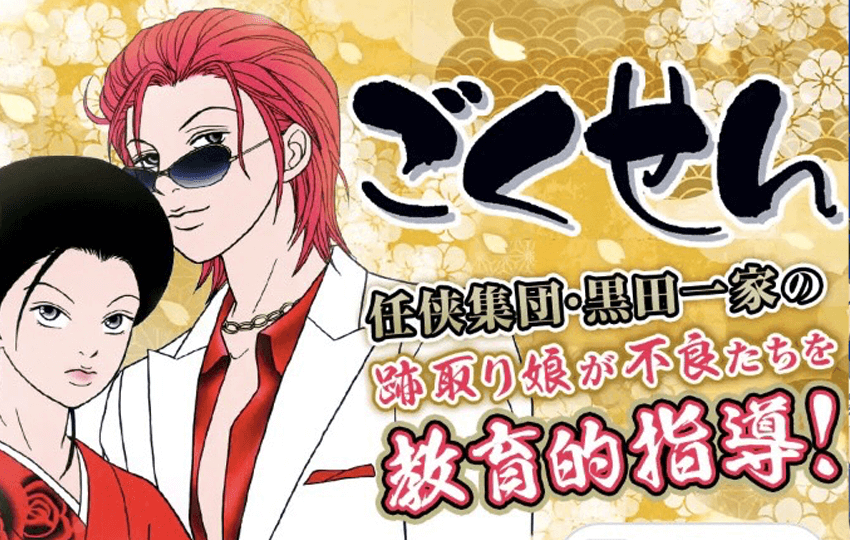
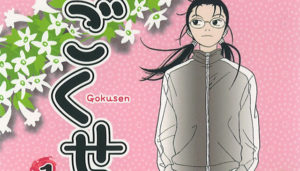 ごくせん
ごくせん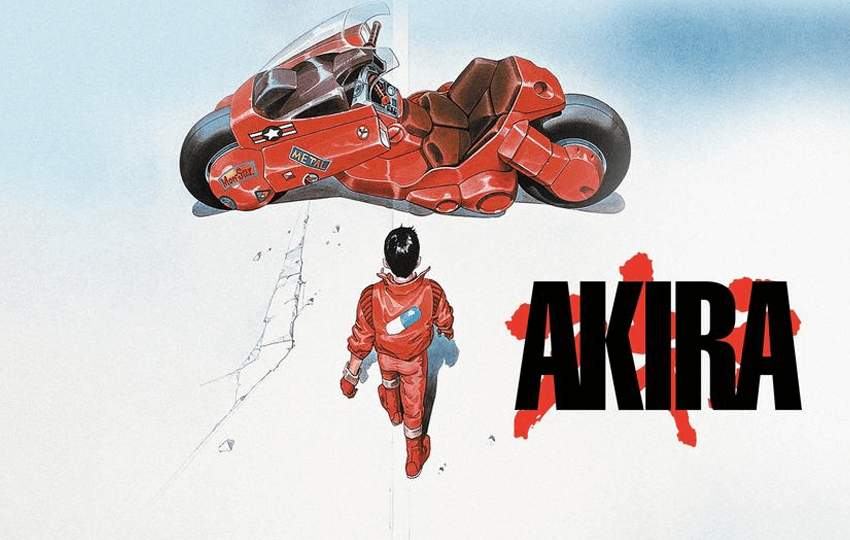
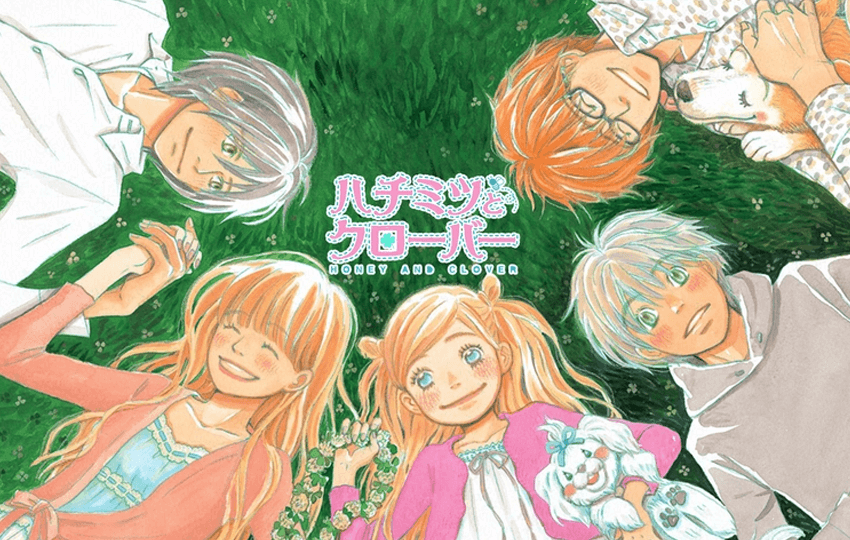
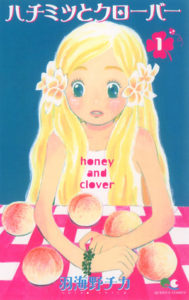 ハチミツとクローバー
ハチミツとクローバー